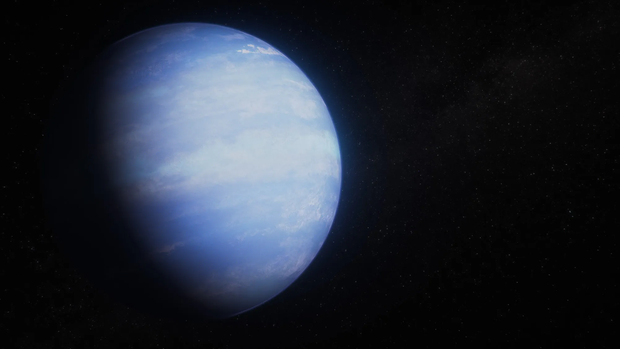Astronomers believe they have solved a peculiar and well-established cosmic mystery, NASA announced this week. Using mostly observations from the James Webb Space Telescope, two groups of researchers may have discovered what causes certain planets appear “bloated” or inflated far beyond the sizes their remarkably low densities would suggest.
It’s a phenomenon that appears to come down to the surprising internal composition of exoplanets like WASP-107b, a “hot Neptune” gas giant identified in 2017 that orbits a star about 200 light-years from Earth. Although scientists have already identified thousands of low-density exoplanets, this one was different from the “Hot Jupiters” and even the unusual “Hot Neptune” studied before.
Astronomers analyzed the composition of WASP-107b in hopes of understanding how it could be so massive and weigh so little, as they assumed, based on features such as its size and distance from its star, that it was cooler internally than it was. .
“Based on its radius, mass, age and assumed internal temperature, we thought WASP-107 b had a very small rocky core surrounded by a huge mass of hydrogen and helium,” said Luis Welbanks of Arizona State University, who led a study. of new studies on the exoplanet, in a statement to NASA. “But it was difficult to understand how such a small nucleus could absorb so much gas and then stop completely transforming into a planet with the mass of Jupiter.”
NASA, ESA, CSA, Ralf Crawford (STScI)
WASP-107b is nearly the size of Jupiter, but only about one-tenth the density. The exoplanet weighs about the same as 30 Earths, while Jupiter weighs more than 300, making WASP-107b one of the least dense planets known, NASA said. This was strange because it is less hot and less massive than other “bloated” exoplanets, such as the Jupiter-like deep space gas giant. WASP-193bwhich was discovered last year and is also known for its extraordinarily low density.
While there is also no evidence-based explanation for the swelling of larger, hotter exoplanets, scientists said WASP-107b was particularly difficult to explain because it does not extract enough energy from the star it orbits for the gases that make it up to disperse. fed. inflate so much. But new data from Webb, combined with older data from the Hubble Space Telescope, has revealed another cause for its expansion.
The telescope’s observations detected only a small fraction of the methane gas that astronomers expected to find in WASP-107b’s atmosphere, which “tells us that the planet’s interior must be significantly hotter than we thought,” said David Sing of the University Johns Hopkins. who led a second new study on WASP-107b.
This supports a theory previously proposed by astronomers about why WASP-107b is “swollen,” suggesting that a process called tidal heating it is responsible for both the warmer internal temperature and the inflated size. Learning about WASP-107b’s atmosphere could also provide crucial information about dozens of other low-density “bloated” planets and what makes them expand, potentially helping to clear up what NASA called a “long-standing mystery in exoplanet science.” ”.
























